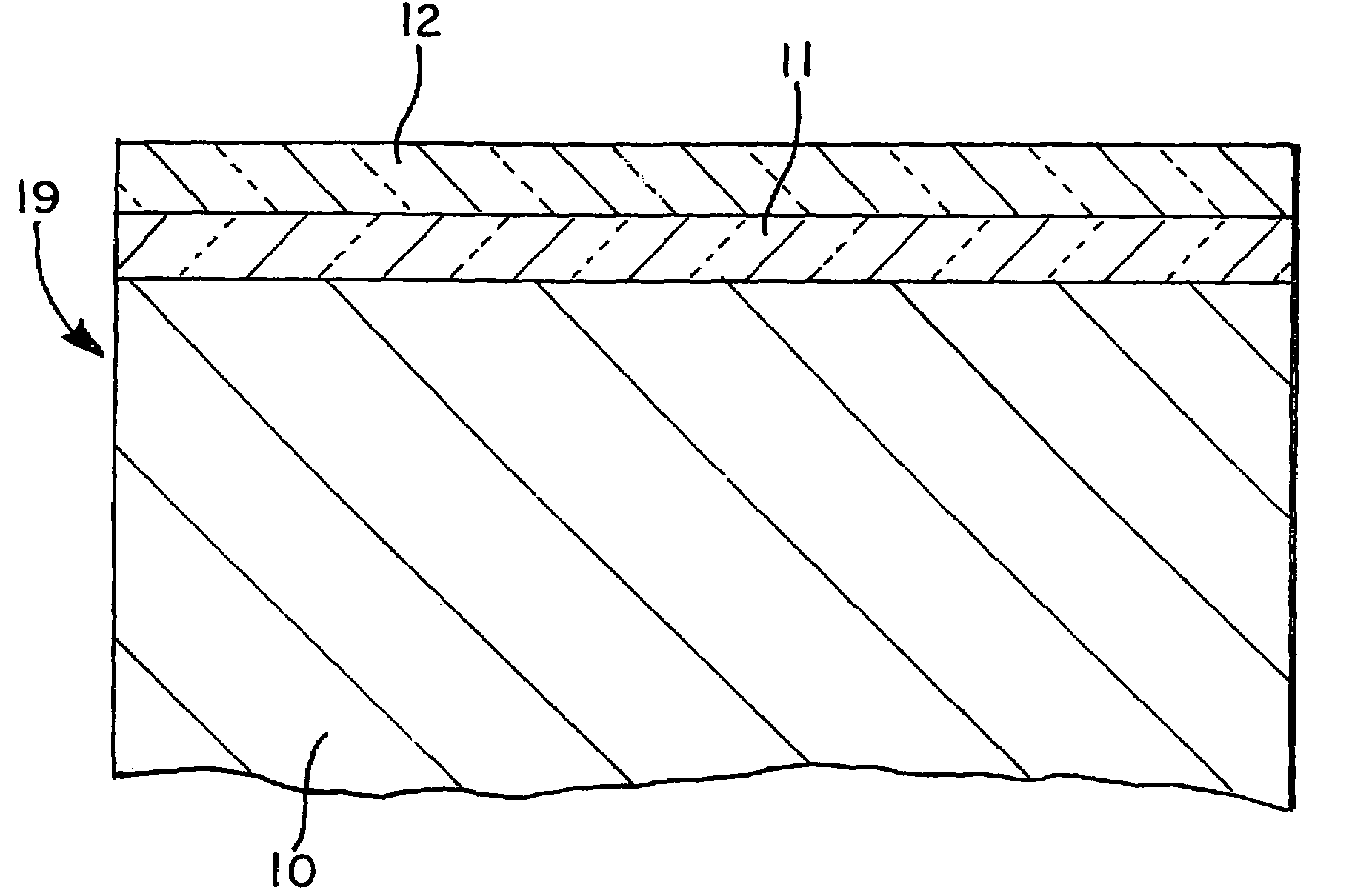High temperature oxidation inhibitors for carbon-carbon friction materials
a technology of carbon-carbon friction materials and oxidation inhibitors, which is applied in the direction of friction lining, other chemical processes, braking discs, etc., can solve the problems of carbon fiber or c—c composites which are useful for instance in airplane braking systems are subject to oxidation and resultant weight loss, mass loss, etc., and composites do not show good resistance to some types of catalytic oxidation
- Summary
- Abstract
- Description
- Claims
- Application Information
AI Technical Summary
Benefits of technology
Problems solved by technology
Method used
Image
Examples
Embodiment Construction
[0016]The present invention is embodied by a carbon fiber or C—C composite component that is coated with a two-layer anti-oxidant system. For a better understanding of this invention, attention is directed to FIG. 1, wherein a coated carbon fiber or C—C article component is generally illustrated at 19. A component 10 is covered by a protective undercoating 11 (phosphorus-containing glass) and the undercoating 11 is covered by a protective overcoating 12 (boron-containing glass).
Component 10
[0017]Before the first fluidized glass formulation is applied to the C—C composite component, the component may be fabricated into almost any desired shape. The present invention is particular valuable with the C—C composite component is an aircraft landing system brake disc.
[0018]Carbon-carbon composites are generally prepared from carbon preforms. Carbon preforms are made of carbon fibers, formed for instance of pre-oxidized polyacrylonitrile (PAN) resins. These fibers can be layered together to...
PUM
| Property | Measurement | Unit |
|---|---|---|
| temperatures | aaaaa | aaaaa |
| wt % | aaaaa | aaaaa |
| wt % | aaaaa | aaaaa |
Abstract
Description
Claims
Application Information
 Login to View More
Login to View More - R&D
- Intellectual Property
- Life Sciences
- Materials
- Tech Scout
- Unparalleled Data Quality
- Higher Quality Content
- 60% Fewer Hallucinations
Browse by: Latest US Patents, China's latest patents, Technical Efficacy Thesaurus, Application Domain, Technology Topic, Popular Technical Reports.
© 2025 PatSnap. All rights reserved.Legal|Privacy policy|Modern Slavery Act Transparency Statement|Sitemap|About US| Contact US: help@patsnap.com


